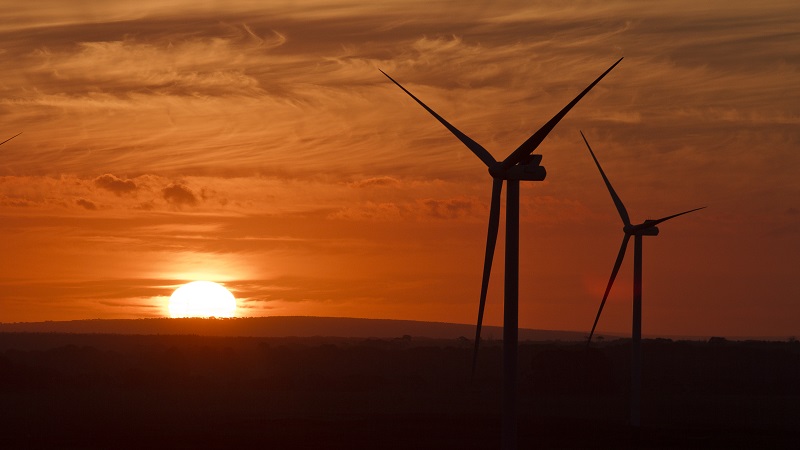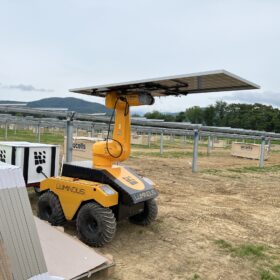From pv magazine global
With solar and wind power already the cheapest source of new power generation across two-thirds of the globe, analysts at Bloomberg New Energy Finance (BNEF) have predicted Europe will lead the race to decarbonize its grid.
The authors of this year’s New Energy Outlook report, published today, expect Europe to generate 92% of its electricity from renewables by 2050 thanks to carbon pricing and other supportive policies. The U.K. last week voiced a net zero carbon 2050 ambitionand it is expected Ireland and the EU will follow suit in due course.
Power sector emissions in China, however, are not set to peak until 2026 – thanks to an extensive modern coal power fleet – although they are expected to decline by more than half in the subsequent 20 years. That is in part because of an anticipated rise in demand for electricity of more than 50% by 2050, with Asia due to present a $5.8 trillion power demand market – more than half the global figure during that period – and India and China alone a $4.3 trillion opportunity.
The United States will also lag behind Europe when it comes to decarbonization, according to the annual study, which is based on analysis of the costs of competing energy technologies. Renewables will more than double their contribution to the U.S. energy mix, to 43% in 2050, but will have to complete with abundant natural gas in a $1.1 trillion new energy capacity market.
Renewables are the big winner
Despite the prevalence of natural gas in the United States, the New Energy Outlook 2019 study predicts that as an energy source, gas will occupy roughly the same share of the market in 2050 as it does today, as will hydropower and nuclear. Oil will have disappeared as a source of energy by mid century, added the BNEF report, and coal – which supplies 37% of power generation today – will have been reduced to a 12% slice of the pie.
Renewables, helped by lithium-ion battery storage will fill the void, according to BNEF, with a rise from 7% of power generation today to 48% by 2050.
That is down to an estimation price reductions in solar, energy storage and wind technologies will continue at rates of 28%, 18% and 14%, respectively, for every doubling in installed capacity. If those predictions are borne out, renewables will supply and store more energy than coal and gas “almost everywhere” by 2030, stated the report.
The good news is that would ensure the world stays on track for global heating of less than two degrees Celsius by 2050 up to the year 2030, without the need for any new public money incentives for renewables in the next 15 years. Beyond that point, however, new technologies would be required as renewables could top out at contributing 80% of energy generation in many countries by 2050.
New solutions needed
That would mean innovations and alternative solutions such as nuclear, biogas-to-power, green hydrogen-to-power and carbon capture and storage would need to be rolled out after 2030, which in turn would require significant spending on R&D before that point.
One other requirement needed to keep us on track as far as 2030 would be for power markets to be reformed to correctly acknowledge, and reward, the role played by renewables and storage in helping the grid.
In a press release issued to publicize today’s BNEF report – which also considers the potential carbon savings to be made in a world with fully electrified transport and building heating – the organization’s head of energy economics Elena Giannakopoulou stated: “[The] NEO [New Energy Outlook] is fundamentally policy agnostic but it does assume that markets operate rationally and fairly to allow lowest cost providers to win.”
Therein lies the rub, perhaps.
This content is protected by copyright and may not be reused. If you want to cooperate with us and would like to reuse some of our content, please contact: editors@pv-magazine.com.









By submitting this form you agree to pv magazine using your data for the purposes of publishing your comment.
Your personal data will only be disclosed or otherwise transmitted to third parties for the purposes of spam filtering or if this is necessary for technical maintenance of the website. Any other transfer to third parties will not take place unless this is justified on the basis of applicable data protection regulations or if pv magazine is legally obliged to do so.
You may revoke this consent at any time with effect for the future, in which case your personal data will be deleted immediately. Otherwise, your data will be deleted if pv magazine has processed your request or the purpose of data storage is fulfilled.
Further information on data privacy can be found in our Data Protection Policy.